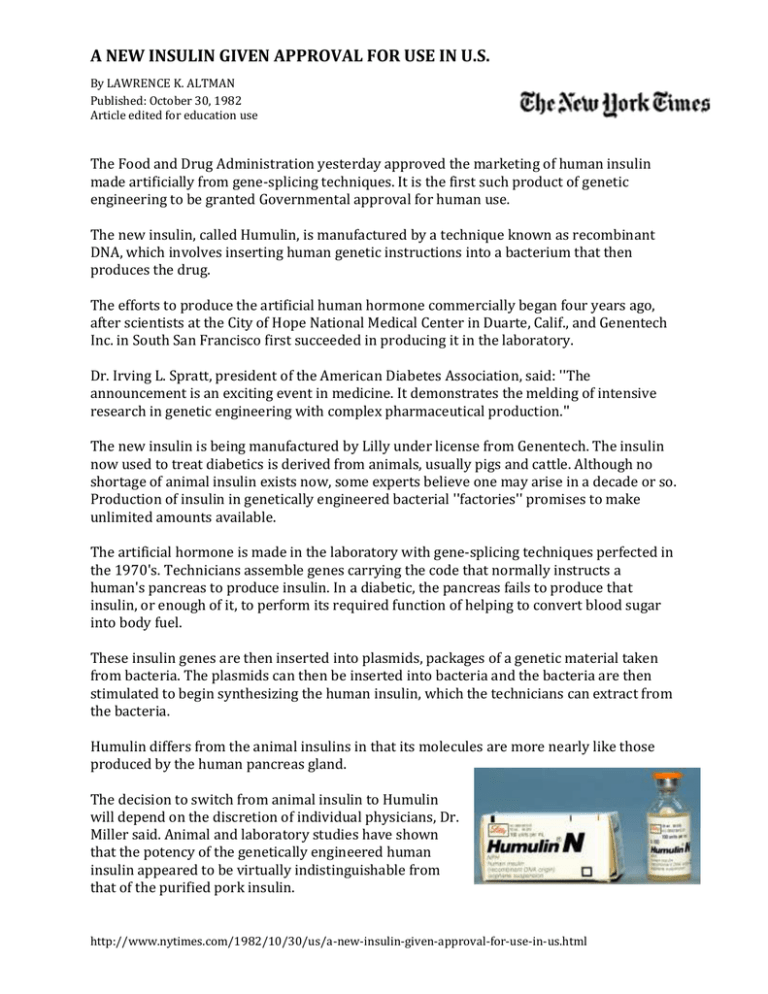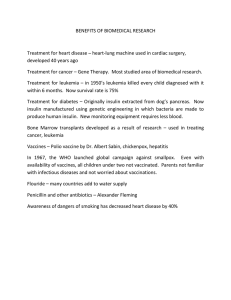34. Humulin Article NYT.doc
advertisement

A NEW INSULIN GIVEN APPROVAL FOR USE IN U.S. By LAWRENCE K. ALTMAN Published: October 30, 1982 Article edited for education use The Food and Drug Administration yesterday approved the marketing of human insulin made artificially from gene-splicing techniques. It is the first such product of genetic engineering to be granted Governmental approval for human use. The new insulin, called Humulin, is manufactured by a technique known as recombinant DNA, which involves inserting human genetic instructions into a bacterium that then produces the drug. The efforts to produce the artificial human hormone commercially began four years ago, after scientists at the City of Hope National Medical Center in Duarte, Calif., and Genentech Inc. in South San Francisco first succeeded in producing it in the laboratory. Dr. Irving L. Spratt, president of the American Diabetes Association, said: ''The announcement is an exciting event in medicine. It demonstrates the melding of intensive research in genetic engineering with complex pharmaceutical production.'' The new insulin is being manufactured by Lilly under license from Genentech. The insulin now used to treat diabetics is derived from animals, usually pigs and cattle. Although no shortage of animal insulin exists now, some experts believe one may arise in a decade or so. Production of insulin in genetically engineered bacterial ''factories'' promises to make unlimited amounts available. The artificial hormone is made in the laboratory with gene-splicing techniques perfected in the 1970's. Technicians assemble genes carrying the code that normally instructs a human's pancreas to produce insulin. In a diabetic, the pancreas fails to produce that insulin, or enough of it, to perform its required function of helping to convert blood sugar into body fuel. These insulin genes are then inserted into plasmids, packages of a genetic material taken from bacteria. The plasmids can then be inserted into bacteria and the bacteria are then stimulated to begin synthesizing the human insulin, which the technicians can extract from the bacteria. Humulin differs from the animal insulins in that its molecules are more nearly like those produced by the human pancreas gland. The decision to switch from animal insulin to Humulin will depend on the discretion of individual physicians, Dr. Miller said. Animal and laboratory studies have shown that the potency of the genetically engineered human insulin appeared to be virtually indistinguishable from that of the purified pork insulin. http://www.nytimes.com/1982/10/30/us/a-new-insulin-given-approval-for-use-in-us.html






